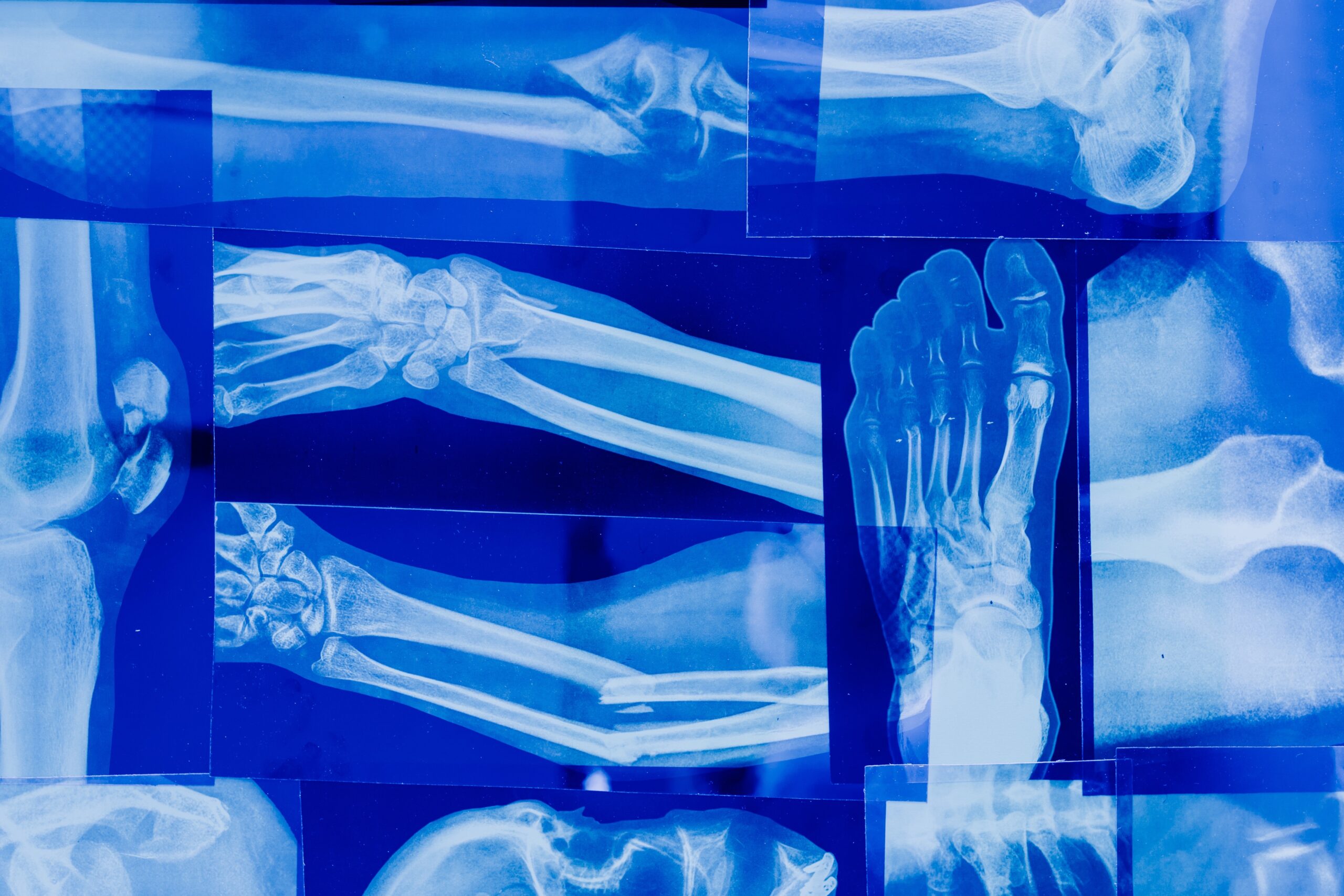
What To Expect After Taking Off A Cast And How Physiotherapy Can Help
Bone fractures are an inherent risk in our everyday lives. You may experience multiple broken bones in a lifetime while others experience one or very rarely, none at all. The stage in life where you may break a bone and how the recovery process will look varies from person to person. Nonetheless, Health Bound Health Network is here to make the process easier and get you moving faster!
Breaking a bone can be an overwhelming experience, especially for adults. Life hits the pause button, forcing you to slow down and rest. When a bone fracture occurs, performing even basic tasks can be quite a mental battle. Don’t worry, if you are reading this right now, you are already on the path to healing in the best possible way. At Health Bound we are here to help you get through this obstacle together. Our practitioners are here to help you make the best choices for your body and ease the process with the proper tools.

Figure 1. Laying down with your feet up with a warm cup of hot chocolate, tea, or coffee is an easy way to enjoy a drink and rest your body. Relaxing your body in the process of healing a fracture can help speed up the process by letting your body repair itself without pressure.
Our physiotherapists will take the time to guide you through physical rehabilitation and fitness routines aimed at optimizing your mobility and functionality. It is important to be mindful of the fact that healing a bone can take approximately six to eight weeks, and sometimes even longer in cases of severe breaks. Many factors come into play during the healing process, including age, the type of fracture, and your lifestyle. During the initial assessment with a physiotherapist, you will be provided with a rehabilitation timeline as a guide to your recovery.
Fractures can be very painful and uncomfortable to experience. A cast is an important part of the healing process, however, life does not immediately return to normal once it is removed. Resting your fracture will help the bone mend properly. However, during the healing process, muscles surrounding the fracture can weaken, which starts to impact the overall function of your body. Typically, when your cast is removed, your doctor will refer you to a physiotherapist with advice on what to focus on and how to speed up the process of healing.
A doctor’s referral is very important to bring to your first appointment as it is a guide from your personal physician who knows your body best. Working with a physiotherapist can help you gain mobility and strength in the part of the body that has been impacted by a break. Exercises will be demonstrated and taught during the session to help strengthen the muscles around the fracture. After the treatment, the exercises will be given in order for patients to continue to practice at home. If the doctor requests no weight bearing for two weeks for example, then rest is required more than movement or any pressure on the bone. Starting the treatment as soon as the cast is removed gives you optimal healing time and results.

Figure 2. Physiotherapists are able to target the root of the problem by working with your body. Manual therapy is a way a physiotherapist can assist you in increasing your mobility.
The body is very complex and complicated. Breaking one bone can lead to other problems such as damage to the soft tissues and structures surrounding the fracture. For example, wrists and elbows may get stiff if your shoulder is fractured, due to your arm being held in a sling. Keeping one part of your body immobile can lead to other parts of the body not functioning properly, which is very normal during the healing process. Physiotherapy is a great way to help your body get back into the groove of things. Since physiotherapists have studied the science of movement, they will be equipped with enough knowledge to help you maintain strength and mobility in the impacted areas of your body. The tools you will learn here will be able to help you even after your bone has healed, especially if you take the time to practice the exercises and stretches given. You are in control of your healing process and with the right tools we can point you in the right direction. The success of your healing process really depends on how much effort is put into the exercises given. It is important to practice even for a little bit on strengthening in order to reap the benefits. However, throughout the healing process, rest should also remain a priority.

Figure 3. Having more fruits and vegetables with meals will help your body heal your bones faster. Taking vitamin D and calcium are some vitamins that can help ease the process.
Oftentimes, rest is overlooked as not productive but is critical after a fracture. Your body needs time to recover and the best way to do so is through sleep or by lying down and resting the affected area. Nutrition also plays a vital role in the recovery process as it takes essential nutrients to mend the fracture and soft tissue around it. Key vitamins and minerals, such as calcium and vitamin D, are important in this regard. Eating healthy during the recovery process will help aid the journey to recovery. Furthermore, there are new technologies, such as Bone Growth Stimulators, that can assist in this process.
The Bone Growth Stimulator is a device that uses electromagnetic waves that are ultrasonic or pulsed on the impacted bone. In order for the Bone Growth Stimulator to be effective, it should be used daily until all the electric currents have been used up. With the use of this machine, you will be able to speed up bone growth in the targeted area. However, this machine is not suitable for anyone. It should be avoided by pregnant women, individuals with false joints or pacemakers, those with skeletal immaturity, and in cases where there is a gap larger than 50% of the bone’s diameter. Bone Growth Stimulators come in different sizes, depending on the area that has been impacted. This is an item we carry at Health Bound Health Network. If you have extended health insurance and are interested in this item, check the device area of your benefits plan to see if you are eligible. Bone Growth Stimulators are often recommended by surgeons. If you have any further questions about them, we would be happy to answer them. Health Bound has more than one location where you can be treated for a broken bone.
We have locations in Markham, Barrie, Hamilton, and Toronto. In Toronto, we have two locations, one on Bloor West and the other on Pape Ave. All of our locations are equipped with professionals who will help you gain your strength and mobility back.
If you have recently taken off a cast and would like to begin treatment to help speed your recovery, please give us a call at 416-548-7872 and speak to one of our receptionists to book your appointment. We would be happy to assist you and answer any questions you may have.
Written By: Maria Votsis
References
WebMD. (n.d.). What to know about bone stimulators for fracture. https://www.webmd.com/a-to-z-guides/what-to-know-about-bone-stimulators-for-fracture
College of Physical Therapists of Ontario. (n.d.). What is physiotherapy. https://www.collegept.org/patients/what-is-physiotherapy
ScienceDirect. (n.d.). Physiotherapy following fragility fractures. https://www.sciencedirect.com/science/article/abs/pii/S0020138318
Houston Methodist. (2021, February). How to heal bones faster [Blog post]. https://www.houstonmethodist.org/blog/articles/2021/feb/how-to-heal-bones-faster/ 30319X
Verywell Health. (n.d.). Physical therapy after fracture. https://www.verywellhealth.com/physical-therapy-after-fracture-2696424

